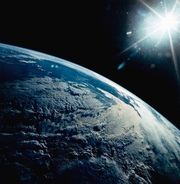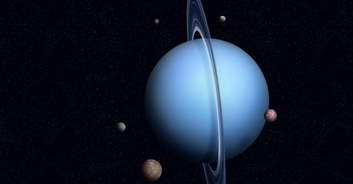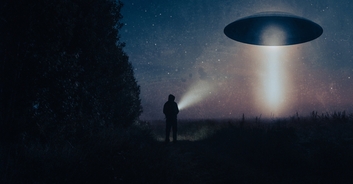With the rate at which global warming is currently destroying the planet, the search for new resources and research into a cleaner way of living is more important than it ever has been before. Ideally, we'd all learn to exist sustainably in order to preserve planet Earth for future generations. Failing that, however, our next best bet would probably be to find a new home for humankind.
And we might just have got a step closer.
According to NASA, some interns working on data from the Kepler space telescope have discovered a new planet "roughly twice the size of Earth located within its star's habitable zone". In other words, the new planet could theoretically be able to support life.

"It's a very exciting discovery due to how it was found, its temperate orbit, and because planets of this size seem to be relatively uncommon," said Adina Feinstein, a University of Chicago graduate student and lead author of a paper describing the new planet.
The planet was discovered when Feinstein and another intern, Makennah Bristow, were charged with searching Kepler data "for evidence of transits," which is "the regular dimming of a star when an orbiting planet moves across the star's face." In doing this, they found the new planet, which has been named K2-288Bb.
According to NASA, K2-288Bb is located a mere 226 light-years away in the constellation Taurus. Its stellar system contains two "cool M-type stars", and this new "Super Earth" orbits the smaller one at a relatively fast rate, with one year on the planet lasting just 31.3 days.

"Estimated to be about 1.9 times Earth's size, K2-288Bb is half the size of Neptune," NASA said. "This places the planet within a recently discovered category called the Fulton gap, or radius gap."
The space agency then went on to explain that it's actually quite rare to find a planet of this size, and so the discovery of K2-288Bb could be useful for research purposes into why this is the case.
"Among planets that orbit close to their stars, there's a curious dearth of worlds between about 1.5 and two times Earth's size. This is likely the result of intense starlight breaking up atmospheric molecules and eroding away the atmospheres of some planets over time, leaving behind two populations. Since K2-288Bb's radius places it in this gap, it may provide a case study of planetary evolution within this size range."

As this is still such a new finding and the planet is so far away, it will still be some time before we find out more about K2-288Bb. However, its discovery could help towards other research into finding a so-called Goldilocks planet: somewhere that will be "just right" for supporting life as it currently is on Earth.
In the meantime, though, it is of the utmost importance that we do everything we can to preserve the home we have now. Who knows, it might be the only one we ever get.



